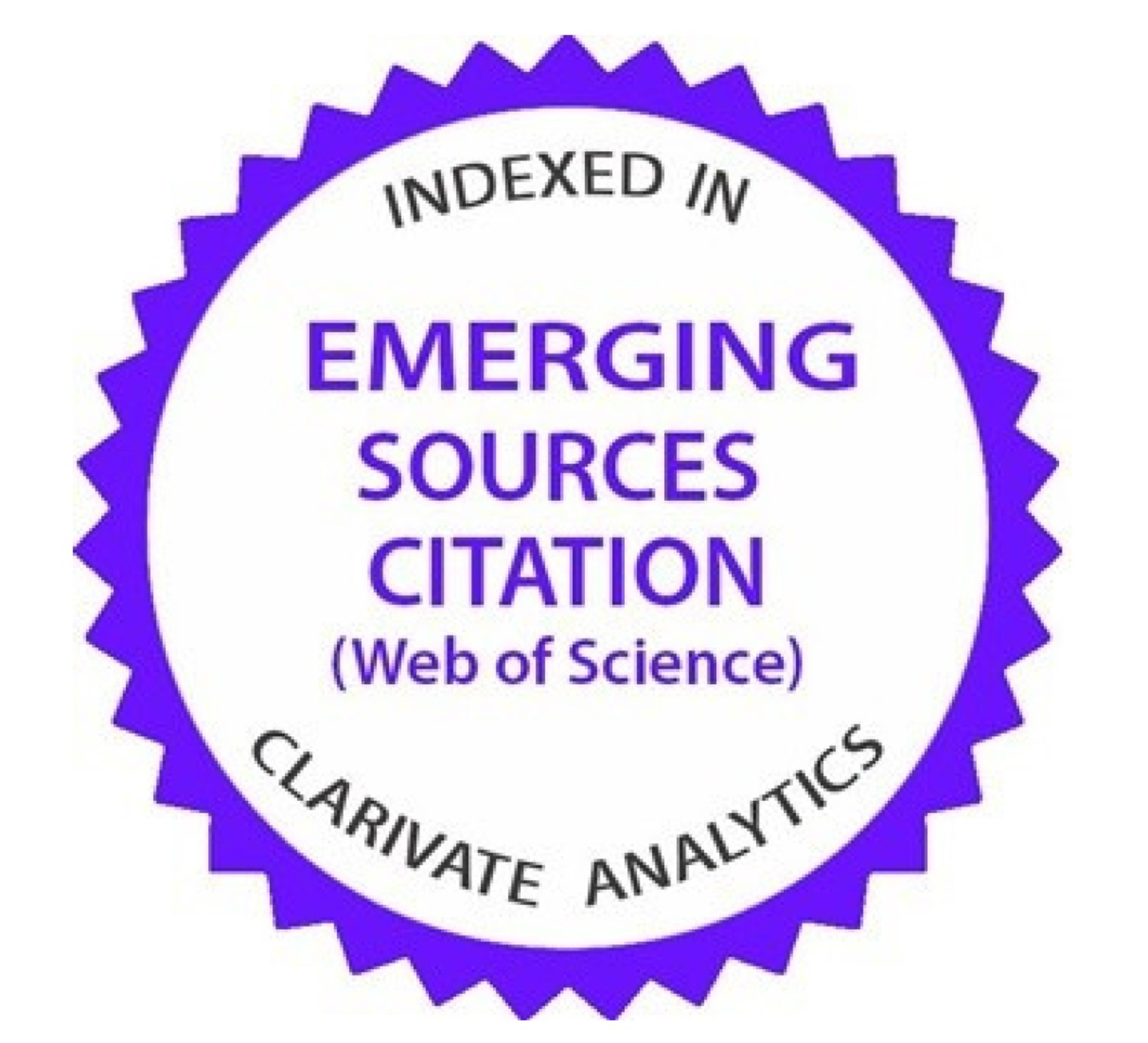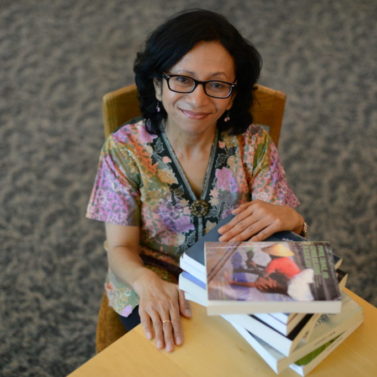Cultural and aesthetic influences in the formation of Kelantanese Wayang Kulit characters: a visual analysis
Downloads
Kelantan Wayang Kulit is a traditional art form that embodies the cultural, aesthetic, and symbolic values of the local Malay community. As a form of shadow theatre, it merges narrative, music, and visual aspects, serving as a significant channel for expressing cultural and ethical values. This research seeks to examine the impact of culture and aesthetics on the design development of key characters in Kelantan Wayang Kulit like Seri Rama, Siti Dewi, Maharaja Wana, and Pak Dogol. Employing a qualitative method via visual analysis and semi-structured interviews, this research explores design features like shapes, lines, colors, and motifs that represent the social status, moral values, and cultural identity of the Kelantan community. The results indicate that the character designs are shaped by multiple external factors, including Thai culture and Hindu-Buddhist epics, yet they have been adapted according to local values through dialects, natural motifs, and Malay-Islamic aesthetic principles. Characters like Pak Dogol embody the people’s wisdom through straightforward visual representation. This research highlights that Kelantan Wayang Kulit is more than a cultural heritage; it is also a vibrant and significant medium of visual communication. These results are significant in initiatives to protect and value traditional art, as well as to motivate modern visual art inspired by cultural heritage.
Abd El Salam SH (2025) Applying the organic visual design theory to enhance design practices (an applied study on the “design fundamentals” course). Journal of Architecture Arts and Humanistic Sciences 10 (13):1686-1703. https://doi.org/10.21608/mjaf.2025.382559.3670.
Ardehali SM (2021) The identity of the puppet and multiculturalism. Itw Im Dialog 5: 118. https://doi.org/10.16905/itwid.2021.10.
Arifin F (2017) Learning Islam from the performance of wayang kulit (shadow puppets). HUNAFA Jurnal Studia Islamika 14 (1):99-115.
Ayuswantana AC, Wibisono AB, & Artanto AT (2021) Wayang Jekdong Art of East Java: Visual transformation of the Bolo Trajutresna puppet. KnE Social Sciences 1 (1):271-279. https://doi.org/10.18502/kss.v5i6.9211.
Baihaqi I, Ahmad HA, & Waskita D (2023) Adaptation of historical figures into mobile game characters (Case study: Hijikata Toshizo from fate/grand order). Journal of Games Game Art and Gamification 7 (2):21-28. https://doi.org/10.21512/jggag.v7i2.9113.
Cahaya R, Wirawan R, Piliang YA, & Irfansyah I (2019) Differentiation of head shapes and positions of shadow puppets Arjuna Kedhu and Kinanthi in Surakarta style. Arts and Design Studies 76. https://doi.org/10.7176/ads/76-04.
Dondis DA (1973) A Primer of Visual Literacy. Cambridge: MIT Press.
Evans J & Hall S (1999) Visual Culture: The Reader. New York: SAGE Publications.
Ghani DA (2011) Visualization elements of shadow play technique movement and study of Computer Graphic Imagery (CGI) in Wayang Kulit Kelantan. International Journal of Art Culture Design and Technology 1 (1):50-57. https://doi.org/10.4018/ijacdt.2011010105.
Ghani DBA (2012) Wayang Kulit Kelantan: The challenges between traditional and digital media in puppetry theatre. Arte, Individuo y Sociedad 24 (1):135-146. https://doi.org/10.5209/rev_ARIS.2012.v24.n1.38048.
Grabar O (2024) Islamic Visual Culture, 1100-1800: Constructing the Study of Islamic Art, Volume II. London: Routledge.
Hidajat R, Pujiyanto P, Hartono Hasyimy MA, Wulandari S, & Ramadani N (2021) The Aesthetics of the Hanoman character in the performing arts of the Indonesia-Thailand Ramayana stories. KnE Social Sciences 12 (4):145-155. https://doi.org/10.18502/kss.v5i6.9189.
Hui DM & Abdullah S (2024) A visual analysis between the sheng character of shadow puppets of the central plains of China and Sri Rama of Wayang Kulit Kelantan, Malaysia. Journal of the International Society for the Study of Vernacular Settlements 11 (2):268-289. https://doi.org/10.61275/ISVSej-2024-11-02-28.
Kia KK (2014) Wayang Kulit Kelantan in digital media. In: Yousof G-S (ed). Puppetry for all Times. Papers Presented at the Bali Puppetry Seminar 2013. Singapore: Partridge Publishing. 271-311.
Kijdumnern P (2022) The anthropological study on ethnicity and memory embodiment of Kelantan Peranakan Chinese food, northeastern Malaysia. Dissertation, Tohoku University, Sendai.
Leder H, Belke B, Oeberst A, & Augustin D (2004) A model of aesthetic appreciation and aesthetic judgment. British Journal of Psychology 95 (4):489-508. https://doi.org/10.1348/0007126042369811.
Matusky, P. (2024). Wayang Jawa (Wayang Kulit Melayu): A Shadow Play Devised by and for the Royalty of the Malay Sultanates of Kedah and Kelantan, Malaysia. In: Performing Arts and the Royal Courts of Southeast Asia, Volume One. Brill’s Southeast Asian Library. 122-138. https://doi.org/10.1163/9789004686533_007.
Mirzoeff N (1999) An Introduction to Visual Culture. London: Routledge.
Naziree S (1998) Traditional arts of Southeast Asia. Thames & Hudson.
Noor FA (2002) The Other Malaysia: Writings on Malaysia’s Subaltern History. Kuala Lumpur: Silverfish Books.
Noorzeha F, Sutono A, & Suryosumunar JAZ (2022) Lakon Punakawan as a form of religious and cultural transformation of Javanese community. AL-ADABIYA Jurnal Kebudayaan dan Keagamaan 17 (1):107-121. https://doi.org/10.37680/adabiya.v17i1.1706.
Nor MAM (1993) The Malay Shadow Play: An Introduction. Kuala Lumpur: Dewan Bahasa dan Pustaka.
Nugroho S, Sunardi S, & Murtana IN (2019) The general artistic orientation of wayang kulit in the folk tradition in the present day. In: Proceedings of the 2nd International Conference on Arts and Culture (ICONARC 2018). 84-86.
Prahmana RCI, Risdiyanti I, Peni NRN, Ristiana N, & Ramadhani R (2025) Javanese folklore with moral values: An impactful context in learning relations and functions. Journal on Mathematics Education 16 (1):197-224. https://doi.org/10.22342/jme.v16i1.pp197-224.
Prakoso I (2024) Mock impoliteness and symbolic interactionism in Ki Seno Nugroho’s Javanese shadow puppet show. LLT Journal: Journal on Language and Language Teaching 27 (2):712-728. https://doi.org/10.24071/llt.v27i2.8190.
Rahim RA (2010) Estetika reka bentuk dalam watak wayang kulit Kelantan. Universiti Teknologi MARA.
Rentse A (1936) The Kelantan shadow-play: (Wayang Kulit). Journal of the Malayan Branch of the Royal Asiatic Society 14 (3(126)):284-301. https://www.jstor.org/stable/41559867.
Setiawan E (2020) Makna nilai filosofi wayang kulit sebagai media dakwah. Jurnal Al-Hikmah 18 (1):37-56.
Sharulnizam R, Aswawi IM, Ariff AM, & Shaipuddin M (2024) Wayang Kulit Kelantan: A case study on puppetry production innovation based on the kenaf tree. In: AIP Conference Proceedings 2799 (1):020013. AIP Publishing LLC. https://doi.org/10.1063/5.0191440.
Sheppard M (1972) Taman Indera: A Royal Pleasure Ground. Oxford: Oxford University Press.
Shukri FM, Shukri ASM, Muhd AA, Shukri SK, Kamaruzaman AF, & Ibrahim Y (2025) Malaysian Heritage and Identity Through Wayang (2008): A Film by Hatta Azad Khan. International Journal of Cultural Heritage 10: 12-20. https://iaras.org/home/caijch/malaysian-heritage-and-identity-through-wayang-2008-a-film-by-hatta-azad-khan.
Sweeney A (1972) Malay Shadow Puppet Theatre. London: University of London Press.
Wang Y (2024) Cultural dialogues in artistic expression: Case studies in cross-cultural artistry. SHS Web of Conferences 185 (4):02011. https://doi.org/10.1051/shsconf/202418502011.
Widyani AI (2020) Visual process study of the BI-wayang creation applied into art and design installation. In: Tarumanagara International Conference on the Applications of Social Sciences and Humanities (TICASH 2019). Atlantis Press. 671-679. https://doi.org/10.2991/assehr.k.200515.110.
Wright BS (1981) Islam and the malay shadow play. Asian Folklore Studies 40 (1):51-63. https://www.jstor.org/stable/1178141.
Xiaochun C & Shanat MBH (2024) Tradition unveiled: a comparative exploration of Kelantan and Shaanxi shadow puppet craftsmanship. Art and Society 3 (3):1-12. https://www.paradigmpress.org/as/article/view/1122.
Yousof G-S (2023) The Ramayana of the Malay shadow play, Wayang Kulit Kelantan, and its possible parallels and connections with versions of the epic in Northern Southeast Asia. In: The Multivalence of an Epic. London: Routledge. 290-302.
Yousof G-S & Khor K-K (2017) Wayang Kulit Kelantan: a study of characterization and puppets. Asian Theatre Journal 34 (1):1-25. https://doi.org/10.1353/atj.2017.0002.
Yunita Y (2020) Wayang in Islamic philosophy. Ri Ayah Jurnal Sosial dan Keagamaan 5 (1):83-95. https://doi.org/10.32332/riayah.v5i01.2330.

This work is licensed under a Creative Commons Attribution-NonCommercial-ShareAlike 4.0 International License.
Copyright of this journal is possession of Editorial Board and Journal Manager, by the knowledge of the author, while the moral right of the publication belongs to the author.
The formal legal aspect of journal publication accessibility refers to Creative Commons Attribution-NonCommercial-ShareAlike (CC BY-NC-SA), implies that publication can be used for non-commercial purposes in its original form (cannot be modified).
Every publication (printed/electronic) are open access for educational purposes, research, and library. Other than the aims mentioned above, the editorial board is not responsible for copyright violation.
















